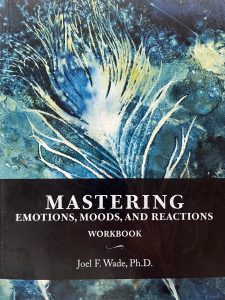Have you ever felt that in striving toward a goal of some kind, that there’s something holding you back? Something that you can’t see or grasp clearly, but you feel it’s there, slowing you down – like you just can’t get traction?
This is something that most of us have experienced to one degree or another.
Maybe we find we hit a wall with how much income we earn; or we find a pattern in our relationships that limits our sense of closeness; or we feel there’s some obstacle in our work that we can’t seem to overcome.
It can feel like there’s a threshold that we can’t seem to cross, no matter how hard we try. We struggle to improve whatever it is, but it’s as though there’s something working against us, like a gravitational pull that keeps drawing us back within a certain range.
When this happens, what we may be experiencing is the effect of a rotten belief.
As children, we absorb an incredible amount of information and understanding from our environment – parents, teachers, the culture of our neighborhood, our town, the events of the world. This includes certain beliefs. Unlike the beliefs we consciously explore, evaluate, and adopt as adults, we often don’t question these earlier beliefs – we aren’t able to, we’re absorbing them through a child’s mind.
So they remain active unless we can bring them into our adult consciousness and re-evaluate them. As adults, not only are they often out of our conscious awareness, on some level they’re part of our self-concept; they’re part of who we are.
Hopefully many of the beliefs we absorb are good and useful, helping us to flourish and grow into a healthy and happy life. But it’s also likely that we take in some beliefs that limit us, keeping us from excelling in certain ways.
Let’s get more specific. Financially, one common belief is that money is somehow bad, or having money – or too much money – is what bad people do. Sometimes it’s as strong as the idea that money is the root of all evil.
Imagine having such a belief as part of our internal sense of who we are. Then when we, in the course of earning a living, start to go beyond a certain income, the part of us holding that old belief might feel something like: “Well, I don’t want to be evil; I don’t even want to be moderately bad… in fact, I want to be a good person.”
So that part of us – often a very young part of us, outside of our conscious awareness – works to make sure we don’t make too much money.
Yet, we need to make money to live – and usually more money than we used to think. So, while we’re consciously working like crazy to try to make more money, another part of us is holding us back. Not because some dark, mysterious force is “sabotaging” us, but because there’s a part of us that’s genuinely, benevolently, trying to help us, wanting us to avoid doing what it learned was evil or bad – a long, long time ago.
We can have a negative belief about love relationships that undermines our success as well. A belief that all men or all women are a certain way; that apologizing means we lose; that, like the title of the old Pat Benetar song, “Love is a Battlefield,” making our love our adversary; or that after a certain amount of time romance always fades. These can limit the joy and longevity with the one we love.
We can have a negative belief about our own abilities at work or elsewhere. Leveling beliefs are common in some cultures, but we can also pick them up seeing or experiencing hurtful jealousy toward those who excel: “Don’t outshine others.” And then when we try to excel at work, it seems like something makes our steps heavier, and our goals more elusive.
What’s needed here isn’t to somehow get rid of a “bad” part of ourselves. What’s needed is curiosity.


 After my workout, I stopped at the cliffs above Capitola, overlooking the Monterey Bay. It had just rained lightly, so the air was crystal clear, and the brownish gold of the kelp beds at low tide made a vivid contrast with the blue gray ocean. The little bit of sun that peeked through the clouds lit a meandering path across the water and through the center of the wharf.
After my workout, I stopped at the cliffs above Capitola, overlooking the Monterey Bay. It had just rained lightly, so the air was crystal clear, and the brownish gold of the kelp beds at low tide made a vivid contrast with the blue gray ocean. The little bit of sun that peeked through the clouds lit a meandering path across the water and through the center of the wharf.
Recent Comments